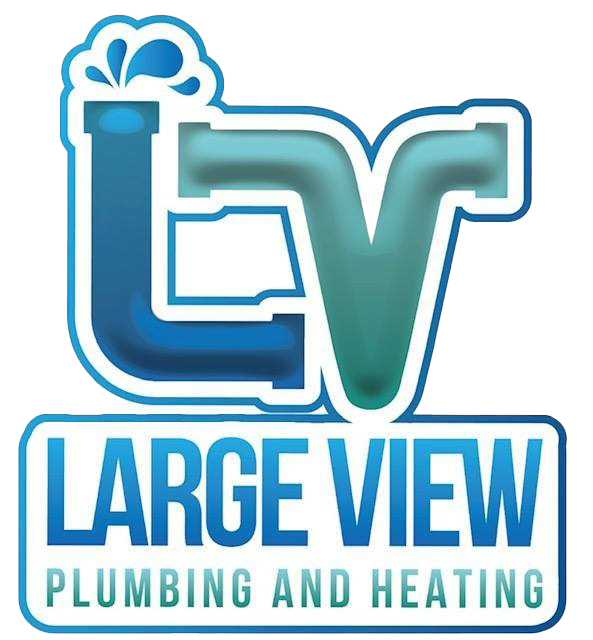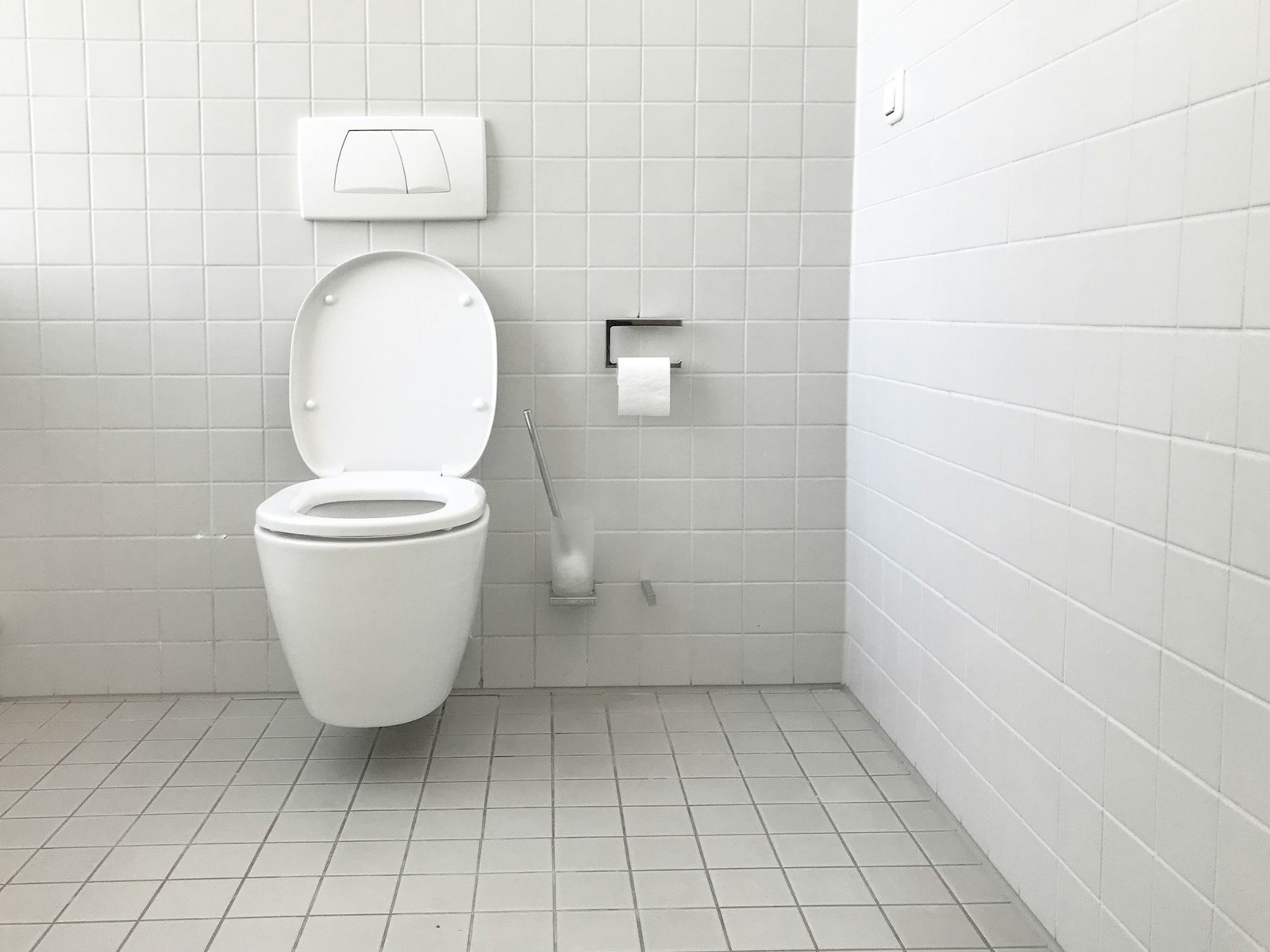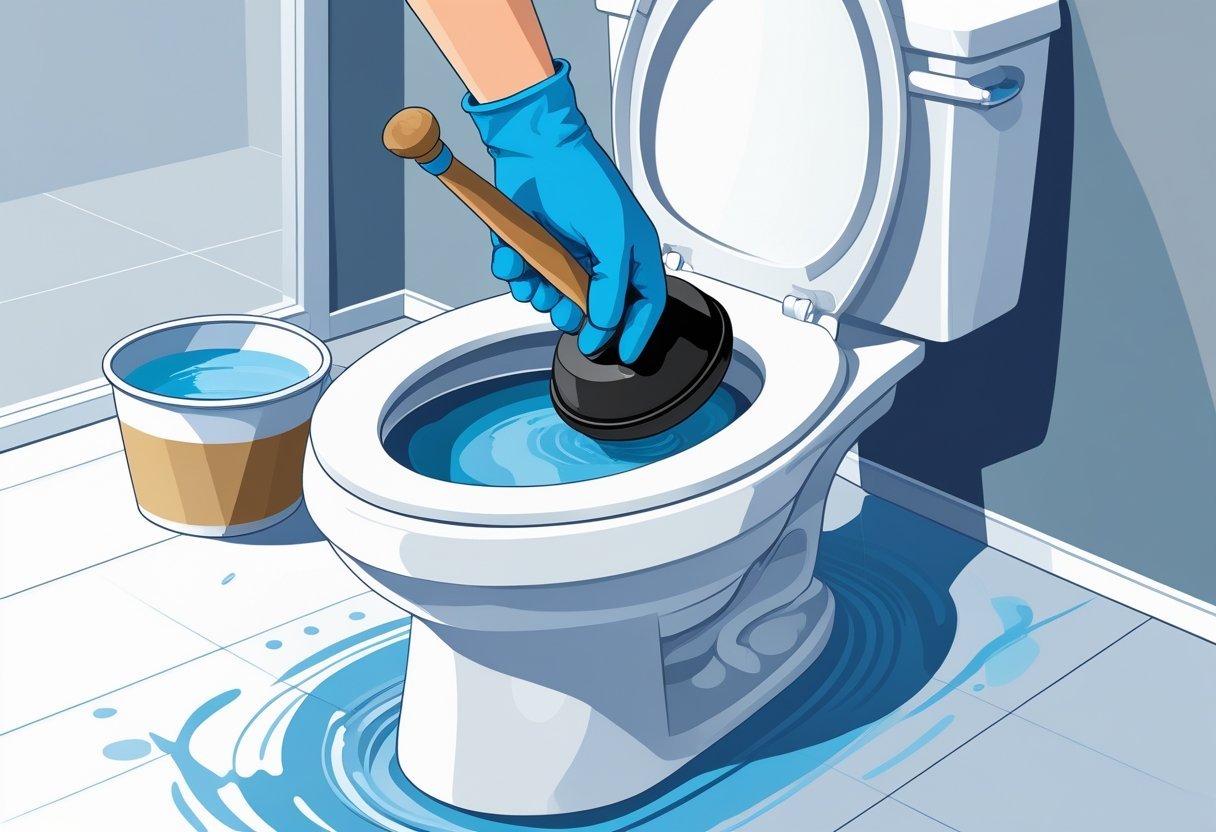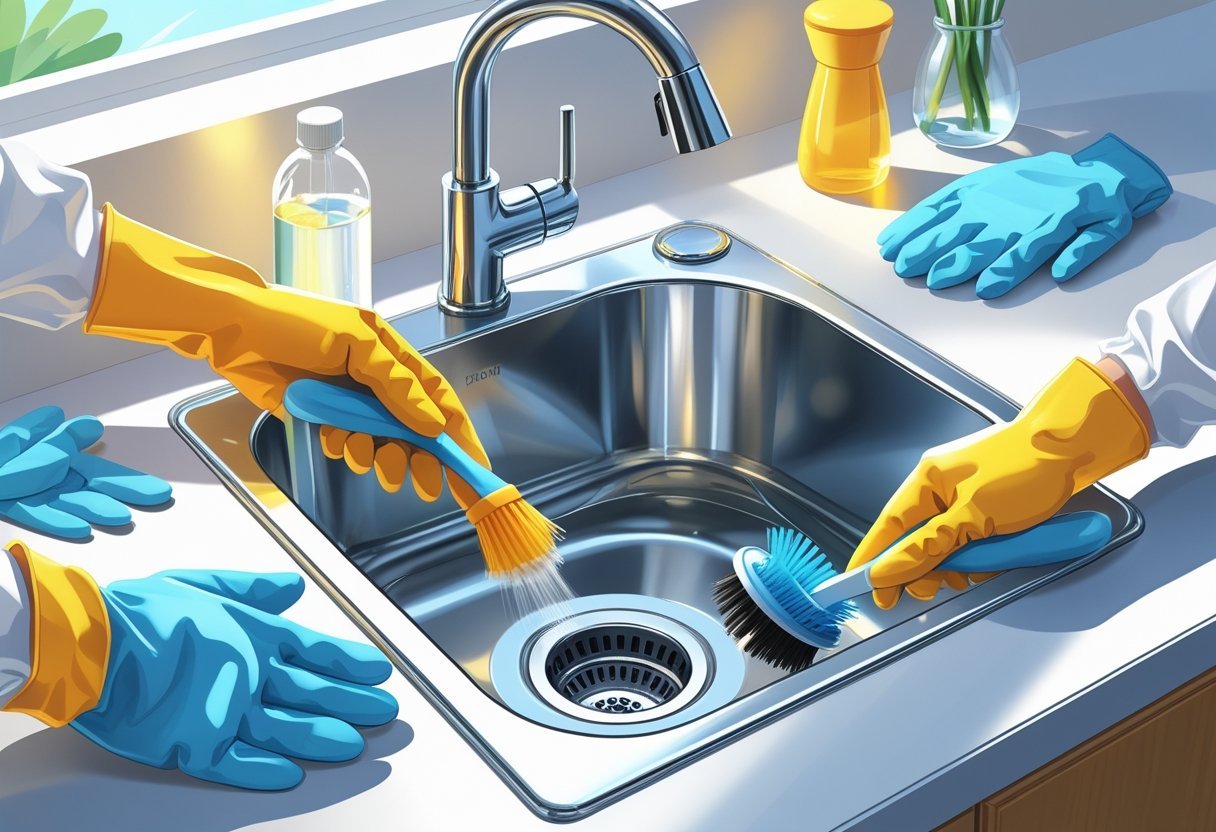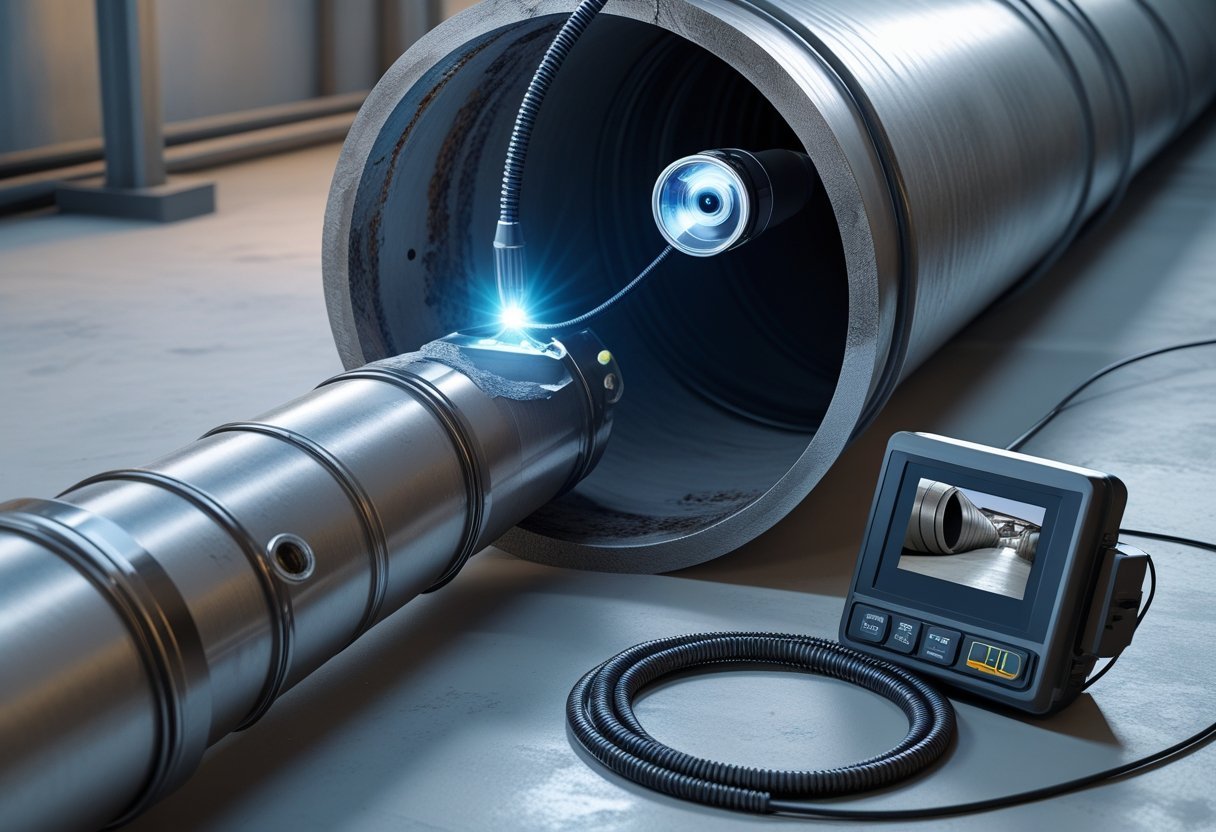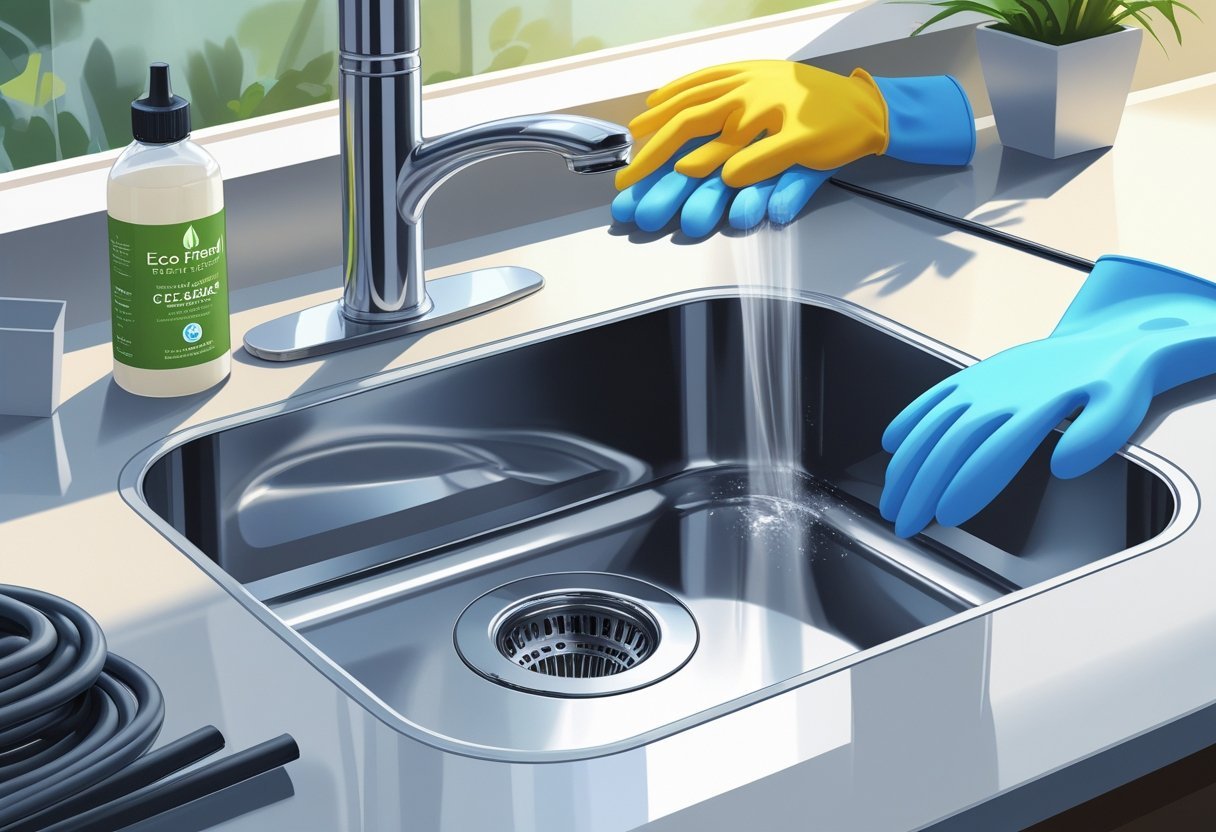When it comes to drain cleaners, many people wonder whether they are acidic or basic. Most drain cleaners are actually basic, containing strong bases like sodium hydroxide, which effectively break down clogs. This chemical reaction is crucial for clearing blockages caused by hair, grease, and other debris.
You may also encounter some drain cleaners that use acids, such as sulfuric acid, but these are less common. Understanding the pH of these products is essential, especially if you’re considering using them in your home. If you’re ever unsure about the best approach to take, consulting with professionals like those at Large View Plumbing & Heating can ensure you use the safest and most effective options available.
For effective solutions to clogs and plumbing challenges, trust Large View Plumbing & Heating. With over ten years of experience, they are committed to delivering quality service that ensures your plumbing issues are handled with care and expertise.
What Is Drain Cleaner?
Drain cleaners are specialized cleaning products designed to remove blockages and clogs in plumbing systems. They come in various formulations, utilizing different chemical properties to break down substances causing obstructions. Understanding the types and ingredients of drain cleaners can help you choose the right product for your needs.
Types of Drain Cleaners
There are mainly three types of drain cleaners: chemical, enzymatic, and mechanical. Each type serves a distinct purpose and employs different methods for clearing drains.
- Chemical Drain Cleaners: These products often contain strong acids or bases. They work by breaking down organic material or grease clogging the pipes. Common examples include sulfuric acid and sodium hydroxide.
- Enzymatic Drain Cleaners: These contain enzymes that eat away at organic matter, such as food particles and hair. While they are slower to act than chemical options, they are less corrosive and safer for the environment.
- Mechanical Drain Cleaners: While not a chemical product, tools like plungers and snakes fall under this category. They physically remove blockages without the need for harsh chemicals.
Common Ingredients in Drain Cleaners
Drain cleaners often feature a mix of chemical compounds tailored for specific cleaning tasks. Key ingredients include:
- Sulfuric Acid: This strong acid breaks down tough clogs quickly but can be damaging to pipes if misused.
- Sodium Hydroxide (Lye): A common alkaline ingredient that dissolves grease and hair effectively.
- Hydrochloric Acid: Another potent acid, effective for tough mineral blockages in toilets and sinks.
- Sterilizing Agents: Some cleaners include agents that eliminate bacteria and odor.
Using drain cleaners effectively requires understanding their compositions. Companies like Large View Plumbing & Heating stress the importance of choosing the right type for your specific plumbing issues to avoid potential pipe damage while ensuring efficient results.
Acidic vs. Basic Drain Cleaners
Understanding the differences between acidic and basic drain cleaners is essential for effective use and safety. Each type plays a unique role in breaking down clogs, utilizing different chemical processes to tackle various materials.
How Acidic Drain Cleaners Work
Acidic drain cleaners primarily contain strong acids like sulfuric acid or hydrochloric acid. These substances effectively dissolve clogs made of materials like hair, grease, and organic debris. The chemical reaction occurs as the acid reacts with the blockage, producing heat and gases that help break down tough obstructions.
When using an acidic cleaner, it’s crucial to follow safety precautions. Always wear gloves and goggles to prevent skin and eye contact. Acidic cleaners can be corrosive, potentially damaging pipes if used improperly. For persistent clogs, consult professionals such as those at Large View Plumbing & Heating to ensure safe and effective results.
How Alkaline Drain Cleaners Work
Alkaline drain cleaners typically contain sodium hydroxide, commonly known as lye. These basic substances work by breaking down organic materials through saponification. This process transforms fats and oils into soap-like substances, facilitating their removal.
Like acidic cleaners, alkaline options can be quite harsh. It is vital to handle them with care, wearing appropriate protective gear. While they are effective for specific types of clogs, regular use can lead to pipe deterioration. If you’re unsure, consider reaching out to Large View Plumbing & Heating for expert advice on choosing the right cleaner for your needs.
Key Chemicals in Drain Cleaners
Understanding the key chemicals used in drain cleaners is crucial for their effective use and safe handling. The two main categories of chemicals found in these cleaners are sulfuric acid and sodium hydroxide, each playing a distinct role in breaking down blockages.
Sulfuric Acid in Drain Cleaners
Sulfuric acid is a highly corrosive compound commonly used in drain cleaners. It is effective at dissolving organic matter, such as hair and grease, which often contribute to clogged drains.
When sulfuric acid comes into contact with water, it generates a significant amount of heat. This exothermic reaction helps to accelerate the breakdown of blockages. Caution is essential, as improper handling can lead to severe chemical burns.
In many commercial formulations, sulfuric acid can be the primary active ingredient due to its potency. You should always use protective gear when working with products containing this acid to ensure safety.
Sodium Hydroxide and Lye
Sodium hydroxide, also known as lye, is another active ingredient frequently found in drain cleaners. It is a strong alkaline substance that works to dissolve fats, oils, and grease in drain pipes.
When combined with water, sodium hydroxide produces an exothermic reaction similar to that of sulfuric acid. This heat can help disintegrate organic materials clogging the drain.
Unlike sulfuric acid, sodium hydroxide is less harmful to plumbing systems when used appropriately. However, it’s still necessary to handle it with caution, as it can cause burns upon contact with skin.
Relevant Chemical Reactions
The effectiveness of drain cleaners is largely due to their chemical reactions. When sulfuric acid or sodium hydroxide interacts with materials in clogs, various reactions occur.
For instance, sulfuric acid can react with proteins and fats in organic materials, breaking them down into simpler compounds. Similarly, sodium hydroxide saponifies fats, turning them into soap-like substances that can easily wash away.
Being aware of these reactions can help you make informed decisions about which drain cleaner to use. For your plumbing needs, you might consider consulting a professional service like Large View Plumbing & Heating, which can provide detailed advice and assistance tailored to your situation.
Safety and Environmental Impact
Using drain cleaners comes with significant risks that can affect both your safety and the environment. Understanding these aspects is crucial for making informed choices about their use.
Potentially Harmful Effects
Drain cleaners often contain corrosive substances, predominantly strong acids like sulfuric acid and hydrochloric acid. These chemicals can cause severe burns on contact with skin. If inhaled, they may lead to respiratory issues, and ingesting them can result in serious internal damage.
Improper handling of these products amplifies the risks. Always store them out of reach of children and never mix different types of cleaners, as this can cause dangerous reactions. If you accidentally come into contact with these substances, seek immediate medical attention to mitigate harmful effects. Using products under the guidance of professionals from Large View Plumbing & Heating can further reduce risks associated with these hazardous materials.
Impact on Plumbing and the Environment
Beyond personal safety, drain cleaners pose a threat to plumbing systems and the environment. The harsh chemicals can corrode pipes, leading to costly repairs and potential clogs. Over time, this can weaken your plumbing infrastructure, necessitating expensive intervention by a licensed plumber.
When these chemicals enter the water supply through drains, they contribute to pollution. This threatens aquatic ecosystems by harming wildlife and disrupting natural habitats. Safe disposal and alternative cleaning methods can minimize the environmental impact. Employing services from a reputable provider like Large View Plumbing & Heating can help you find safer solutions for maintaining your drainage system without compromising your environmental responsibilities.
Alternative Solutions and Best Practices
There are effective alternatives to traditional drain cleaners that can help maintain your plumbing without relying on harsh chemicals. Exploring natural options can be both safer and environmentally friendly. Additionally, understanding when it’s time to seek professional help can save you from further issues.
Natural Alternatives to Drain Cleaners
You can effectively clear minor clogs using natural methods. One popular option is a baking soda and vinegar solution. Pour half a cup of baking soda down the drain, followed by half a cup of vinegar. Allow it to fizz for 30 minutes, then flush with hot water. This reaction produces carbon dioxide, which can help dislodge debris.
Another option is boiling water. Pouring boiling water directly into the drain can help dissolve grease and soap buildup. Regular use of this method can maintain clear pipes.
For persistent clogs, consider using enzymatic cleaners. These contain natural enzymes that break down organic materials without harming your pipes. Always use these products as directed for optimal results.
If you require assistance, companies like Large View Plumbing & Heating can provide additional solutions tailored to your needs.
When to Call a Plumber
While many clogs can be handled with DIY methods, some situations warrant professional attention. If your drain issues are frequent or worsening, it’s best to consult an expert. Persistent clogs might indicate underlying plumbing problems that require specialized equipment.
Signs that professional help is needed include gurgling sounds, slow drains, or backups in multiple fixtures. Such symptoms can suggest blockages further down the line or issues with your main sewer line.
When facing severe or repeated drain problems, contact a reliable plumbing service, like Large View Plumbing & Heating. Their experienced team can assess the situation, diagnose the problem, and provide effective solutions to restore your plumbing system efficiently.
Frequently Asked Questions
This section addresses common inquiries regarding the nature of drain cleaners, specifically their acidity or basicity, chemical composition, and properties. Understanding these aspects can help you make informed decisions when selecting cleaning products.
What is the typical pH level of a drain cleaner?
Most drain cleaners have a pH level that ranges from 10 to 14, indicating they are generally basic. Some formulations may contain acids, leading to pH levels below 7. Knowing the pH can help determine the cleaner’s effectiveness.
Can the pH of a drain cleaner indicate if it is an acid or a base?
Yes, the pH is a clear indicator. A pH below 7 signifies acidity, while a pH above 7 shows basicity. This measurement is essential in evaluating the cleaner’s ability to dissolve clogs and other substances.
What chemical compounds are commonly found in drain cleaners?
Common ingredients in drain cleaners include sodium hydroxide (lye), sulfuric acid, and bleach. Sodium hydroxide is often used for its strong basic properties, while sulfuric acid can effectively break down organic materials.
How do the chemical properties of sulfuric acid affect its use in drain cleaners?
Sulfuric acid is a powerful acid that can dissolve organic matter effectively. Its ability to generate heat upon dissolution makes it effective but also requires caution regarding potential damage to plumbing fixtures or pipes.
Are sodium hydroxide-based drain cleaners considered acidic or basic?
Sodium hydroxide-based drain cleaners are classified as basic. They work by saponifying fats and breaking down organic materials, making them effective for various clog types.
What are the characteristics of bathroom cleaners in terms of acidity and alkalinity?
Bathroom cleaners typically range from mildly acidic to neutral. This pH balance helps in removing soap scum and mineral deposits without damaging surfaces. Always check the product specifics for safe use on different materials.
If you have further questions, consider reaching out to professionals like Large View Plumbing & Heating for expert advice and tailored solutions for your plumbing needs.
